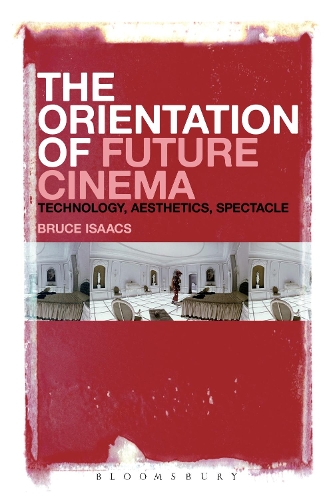
The Orientation of Future Cinema: Technology, Aesthetics, Spectacle
(Paperback)
Publishing Details
The Orientation of Future Cinema: Technology, Aesthetics, Spectacle
By (Author) Dr. Bruce Isaacs
Bloomsbury Publishing PLC
Bloomsbury Academic USA
23rd October 2014
United States
Classifications
Professional and Scholarly
Non Fiction
791.43
Physical Properties
Paperback
320
Width 152mm, Height 229mm
431g
Description
What is the fate of cinema in an age of new technologies, new aesthetic styles, new modes of cultural production and consumption What becomes of cinema and a century-long history of the moving image when the theatre is outmoded as a social and aesthetic space, as celluloid gives over to digital technology, as the art-house and multiplex are overtaken by a proliferation of home entertainment systems The Orientation of Future Cinema offers an ambitious and compelling argument for the continued life of cinema as image, narrative and experience. Commencing with Lumires Arrival of a Train at a Station, Bruce Isaacs confronts the threat of contemporary digital technologies and processes by returning to cinemas complex history as a technological and industrial phenomenon. The technology of moving images has profoundly changed; and yet cinema materialises ever more forcefully in digital capture and augmentation, 3-D perception and affect, High Frame Rate cinema, and the evolution of spectacle as the dominant aesthetic mode in contemporary studio production.
Reviews
The Orientation of Future Cinema offers a lucid, theoretically grounded aesthetic justification for the new media including popular high concept' cinema of spectacle and 3-D. Claiming that the digital image is understood as affective experience rather than representation, Bruce Isaacs takes a much-needed step toward providing a critical language for a media culture readily appreciated, manipulated and disseminated by todays generation. -- Linda Badley, Middle Tennessee State University, US
The Orientation of Future Cinema is an elegantly written, provocative, richly illustrated, historically informed book that breaks new ground in cinema and media studies. Isaacss book does much more than explore the shifting, tenuous relationship between the spectator and the image. Instead, his book actually models a fresh, surprising way of writing about the film image in an era when the idea of film itself is undergoing a revolution that opens up new possibilities for accounting for the continued lure of the film spectacle. There are so many powerful, insightful moments in the book; in fact, Isaacss extended discussion of the complex relationship between sound and image in Francis Ford Coppolas film The Conversation or Michel Gondrys Eternal Sunshine of the Spotless Mind are worth the price of admission alone. The Orientation of Future Cinema is essential reading for anyone interested in the fate of the image in the digital era. -- Nicholas Rombes, University of Detroit Mercy, US, author of Cinema in the Digital Age
Film theory and criticism have often fixated on a single aspect of cinema, to the detriment of all else: space or time, movement or stillness, action or contemplation, sensuality or intellection, classical or modern, fun or philosophy Bruce Isaacs The Orientation of Future Cinema is an attempt to keep all the paths open, to synthesize different analytical tools, and to embrace the totality of film from art cinema to blockbusters, from yesterdays silent movies to todays digital formats. Accepting cinema equally as both an itinerary of the image and a narrative art, Isaacs aims at no less than a new, integrated aesthetics of the film medium as a synthetic form, both realistic and artificial, emotive and reflective but always, at its best, absorbing and astonishing. -- Associate Professor Adrian Martin, Monash University, US, Co-Editor of LOLA magazine * Endorsement *
Author Bio
Bruce Isaacs is a Lecturer in Film Studies at the University of Sydney, Australia. He has published widely on film history and theory.
